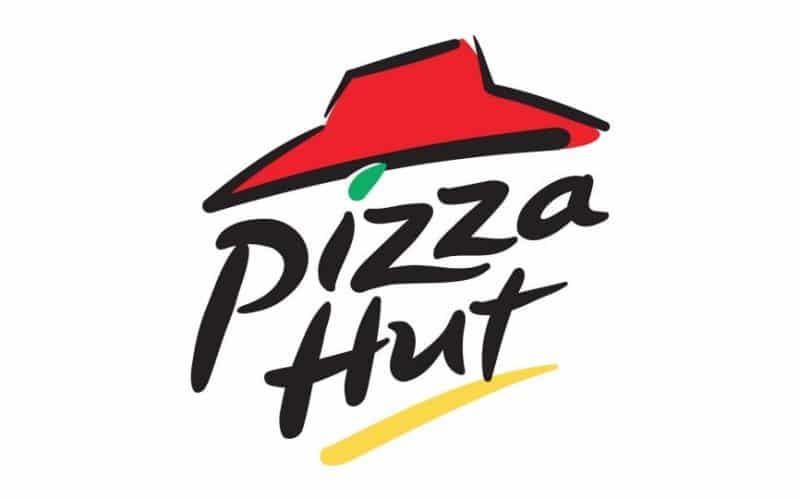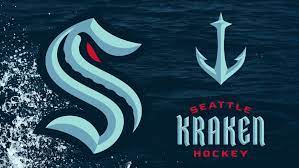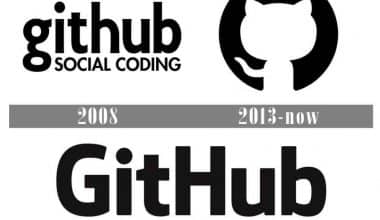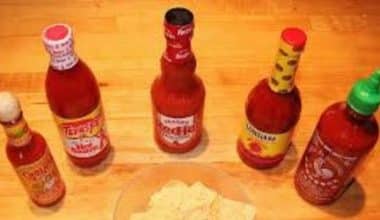The symbols in the Pizza Hut logo depict a wide variety of hot, fresh foods prepared in the oven. The emblem ensures that the restaurants taste like home. What, then, can we learn from the history of the Pizza Hut brand and its logo? Find out in this article.
Overview of the Pizza Hut Brand
Pizza Hut is a fast-food restaurant business and international franchise headquartered in the United States that serves Italian-American cuisine. She makes a variety of pizzas as well as side dishes, spaghetti, and desserts. Its initial location was in Wichita, Kansas, where the Carney brothers, Dan and Frank, founded it. With approximately 18,700 outlets, the pizzeria is now the world’s largest catering structure (as of January 2020). It’s no coincidence that Richtopia, based in the United Kingdom, named it 24th among the top 200 most influential companies. Yum! Brands, Inc. has acquired this service.
History and Meaning of The Pizza Hut Logo
In 1958, two brothers from Wichita State University decided to create an Italian pizzeria in their hometown. Six months later, they opened a second location, and by 1959, they had established a true fast-food business with nine locations. Dan and Frank converted to a franchise scheme the same year. Later, the Pizza Hut building’s iconic design appeared (in 1963). George Lindstrom, a Chicago-based architect, designed it. The project was finished in 1969.
The restaurant franchise changed hands in 1977 when it was purchased by PepsiCo. Twenty years later, Pizza Hut and two other food service companies (Kentucky Fried Chicken and Taco Bell) left the organization and created Tricon Global Restaurants, Inc. But then, a few years later, she revised it: as a result, Yum! Brands will launch in the spring of 2020.
Throughout this time, the restaurant’s unmistakable identity has remained: the logo, sign, and design of the building with a red roof, which finally became an emblem. As a result, the Chicago architect can be considered one of its authors. There are a total of nine personal characters in the franchise’s career.
Evolution Of The Pizza Hut Logo
1958 – 1970
The name appears horizontally and is embellished with “jumping” letters in the pizzeria chain’s debut logo. They refer to the impatience with which visitors wait for their order, not to fun. That is, it is a clue to the superb taste of Pizza Hut’s dishes. Words are red uppercase letters with a strong serif font.
1962 – 1970
This was the Coca-Cola company’s logo. It also uses the franchise name but in a completely different style. Instead of red-black, instead of “jumping” lines, use straight lines and symbols with even tops. If you look attentively, you will find that not all of the letters are leveled. The right leg “A,” for example, is longer than the others, and the “U” is higher than the others. The phrase is battered off with thin lines above and below.
1970 – 1974
The makeover achieved the ideal balance of the original and new logos. The developers took the style and geometry of the letters from one and the restraint and color of the inscription from the other. Aside from monochromatic, they also modified the word placement: they are now placed in a column, one above the other. Because it was sustained for virtually the entire remaining time, this proportionality became cult-like (except for a couple of periods). “Jumping” symbols are handcrafted.
1974 – 1999
Lippincott developed the logo, which was approved in 1974, in partnership with Marketing Manager Sam Moyers. It is notable for the legendary red roof, which first appeared in it, as on the branded buildings of a restaurant chain. The iconic element will go on in perpetuity. A two-level inscription in an updated font can be found beneath the roof. It employs wavy lines – lowercase “z” and uppercase “H” – to substitute the lower portion of the letters in the first case, and the middle bar in the second.
1999 – 2010
In 1999, the company adopted a conceptually new logo, with looser lines, as if created with a single brush stroke. This is true for both visuals and text. Landor Associates created the new brand identity. The roof is now diagonally positioned and has black stripes on all sides. The writing likewise runs diagonally from bottom to top. Although they share some outlines, the letters appear inconspicuous and less severe than in the prior edition. The dot above the I in the word “Pizza” is extended and green. The symbols look like they were scribbled. At the bottom, there is a yellow underlining.
2010 – 2014
This is an updated version of the old emblem. There are no strong black lines around the roof’s perimeter. The underlining has also been enlarged, and a sunlight-like sheen has been applied. The roof was also straightened horizontally, although all other parts remained in their original positions.
2014 (North America)
The emblem of 2010 serves as the foundation for this logo. The yellow underline at the bottom of the text was deleted, and the green leaf above the I was repainted in black. This logo is still used in several nations today.
2014 – 2019
Pizza Hut launched an all-out redesign in 2014 in order to attract more customers and increase revenue. She actually updated everything: the signboard, clothing, menus, and symbols. As a result, the insignia took on a round shape and resembled a pizza. This is because eleven new branded pizzas were developed, therefore the attention was on them. Only red remains from the previous design, as it is the signature color of the roof and toasted pizza. With a white dashed outline, the names of the net and the roof were placed in the center of the circle. The logo was redesigned by Deutsch LA.
2019 – today
In the summer of 2019, Pizza Hut reintroduced the original logo and red roof that had been in use from 1974 until 1999. It is now dominated by three wavy lines, a flat roof, and letters that are typical of Lippincott.
Font and Colors Of The Pizza Hut Logo
A brick-red roof has been used in the identification of the catering network since the 1970s. It features a large brim and an elevated center, giving it the appearance of a hat. This is the company’s key sign, which disappeared just once (in 2014) for a drastic change in appearance, but subsequently reappeared.
The oblique typeface, which has been employed in the symbol for many years, is unique and resembles wire brush strokes. Hot Pizza is the current font. Designer Dennis Ludlow created it. He suggested a new serif print.
The pizzeria chain’s distinctive hue is red, which is always mixed with white. It was accented at various times by black, yellow, and green.
What does the Pizza Hut Logo represent?
The designers of the Pizza Hut logo, created in 2014, toyed with tomato sauce, which is poured in a spiral onto a thin pizza crust. Following a revamp in 2019, the American restaurant brand reverted to its original sign, a huge roof. She represents the brand’s name, while her red color represents tomatoes. Furthermore, the emblem’s roof resembles a hat with protruding edges, which is why it is connected with comfort and safety.
Who came up with the Pizza Hut logo?
Richard D. Burke, an artist, and architect built the first Pizza Hut building, which had a huge red hat-shaped roof. He intended the design to look like a cottage rather than futuristic. That is, while Burke conceived the roof in 1969, the pizza chain’s logo was created by others. Lippincott introduced their version of the red hat emblem in 1974, in partnership with Sam Moyers (marketing manager). Landor Associates, a consulting firm, redesigned it in 1999.
Why is the I in Pizza Hut green?
From 1999 to 2014, the dot above the ‘I’ on the Pizza Hut logo. was green due to the branding consulting firm Landor Associates’ efforts. Some believe it represents the basil leaf, an essential component of the Margherita pizza topping. This meal is notable for its hues, which correspond to the Italian tricolor. That is, the logo of a restaurant chain can include a reference to a country where pizza is the foundation of traditional food.
What is Pizza Hut’s slogan?
The restaurant brand Pizza Hut has a tagline that plays on its name: ‘No one outpizzas the hut.’ However, older slogans were more succinct: ‘Now You’re Eating! ‘ and ‘Makin’ It Great.’ The latter ran in advertising from the 1980s until 1995, and his ‘Make It Great’ version from 2012 to 2016. There was also the motto ‘Makin’ it wonderful again and again.’ Until the 1980s, the most popular slogan was ‘Gather Round The Good Stuff,’ which was not included in the emblem.
What Is the Pizza Hut Logo Meaning?
At first sight, the Pizza Hut logo appears to be a red hat, but it is not. In fact, the designers portrayed the multicolored roofs of the historic restaurants in order to pay homage to their famous architecture. The crimson tint could be a representation of the tomato sauce used to make the pizza. It is also a symbol of vigor and vitality. Because pizza is a traditional Italian meal, the wavy ornamental lines around the letters ‘z’ and ‘H’ are the embodiment of Italian beauty.
Is The Pizza Hut Logo A Hat Or A Roof?
It’s not a hat; it’s the shape of their store roofs. Because the word Pizza Hut is linked to a structure, the roof form became their emblem.
Where did the Pizza Hut logo originate?
The Pizza Hut logo has been around for decades, and designers occasionally modify it by adding or eliminating aspects. The roof of a restaurant erected by Richard D. Burke in 1969 inspired the original red hat. This is the most identifiable aspect of the Pizza Hut brand. Even in 2014, when the insignia was played with tomato sauce streaming in a spiral onto stretched pizza crust, it lasted.
What Company Created the Pizza Hut Logo?
The famous red roof is entirely integrated into the logo, which was developed by New York-based Lippincott and approved by Pizza Hut’s marketing director, Sam Moyers. In 1974, as a result of their close collaboration, an emblem with stylized black text under the ‘hat’ appeared. It was used until 1999 and returned 20 years later when the restaurant chain restored it in 2019 to show its connection to the past and pay tribute to the original architecture.
Why did Pizza Hut Revert to its Previous Logo?
Because it was the most successful, the Pizza Hut restaurant company brought back its logo, developed in 1974 by Lippincott and Sam Moyers, in 2019. She intended to emulate the former identity’s success while also positioning herself as a “pioneer” in the American pizza business. The vintage symbol is intended to remind customers that Pizza Hut is one of the oldest pizza brands in the United States.
What is Pizza Hut?
Pizza Hut has almost 17,000 locations globally, servicing clients in nearly a hundred countries. Pizza made in a deep pan is their main offering. There are also a variety of sweets, breadsticks, pasta, and other items on the menu. Pizza Hut was founded in 1958, and its amusing red hat logo was designed in 1974 and tweaked multiple times since then. Wichita, Kansas’s largest city, is the birthplace of the worldwide pizza brand.
A History of Pizza Hut and Its Marketing
Pizza franchises do not become successful overnight. To get to where they want to go, it takes time, hard effort, and, you guessed it, effective marketing. That being said, we’d like to take the time to highlight the history, failures, and triumphs of one well-known chain in particular…Pizza Hut: the world’s top fast-food corporation, and possibly the single most successful pizza producer to date. Continue reading to find out how this restaurant company becomes one of America’s most well-known pizza brands.
The Pizza Hut’s Evolution
In 1958, two brothers joined together (after borrowing $600 from their mother) to launch what would ultimately be known as Pizza Hut in Wichita, Kansas, with partner John Bender. They began with a wonderful marketing strategy – free goods – giving out pizza on the first night to encourage customers. They built a second business six months later, and a year later, they had six restaurants, prompting them to explore franchising. With their use of hard-hitting marketing, Pizza Hut’s name became known throughout the early 1960s. The well-known architectural style did not appear until 1969. And what about the well-known name? Simply because their sign could only accommodate eight letters. Who would have guessed?
In 1977, Pizza Hut combined with PepsiCo, increasing sales to $436 million and allowing for the establishment of a $10 million headquarters in Wichita.
Failures result in success.
Profits fell in 1994 as a result of many changes. These changes included a halt in pizza industry expansion, price competition, and an increase in outlets, resulting in fewer company resources. Profits fell by 21% overall, indicating that it was not the best time for the hut (to say the least). The rise of dine-in versus delivery was also a factor for Pizza Hut. According to Restaurant Business, at the time, just approximately 10% of Pizza Hut’s sales came from dine-in, so they needed to focus more on what people wanted and needed – takeaway and delivery. To address this issue, many dine-in-only locations shuttered and express locations sprouted up.
Furthermore, Pizza Hut began utilizing a combination of creative marketing efforts, cutting-edge technology, and reinvented menus and recipes. Sales increased by 3% in 2020 as a result of these developments. Pizza Hut continues to invest in cutting-edge technology in order to expand and evolve. They’ve even introduced an omnichannel menu management system to improve productivity and unify their shops.
Pizza Hut now serves around 2 million pizzas each day from more than 12,000 outlets, with 4 million consumers (and rising) worldwide.
Marketing
Pizza Hut has never been reluctant to experiment with new and unique marketing techniques. In 1965, their debut television commercial was titled “Putt Putt to the Pizza Hut.” Since then, they’ve had various slogans, including “Makin’ it amazing!” ” from 1987 to 1995, “You’ll adore what we’re made of” from 1995 to 1999, “Gather ’round the wonderful things” until 2007, “Now You’re Eating! “Your Favorites” from 2008 to 2009 From 2009 to 2012, it was “Your Pizza Hut,” and from 2012 to 2016, it was “Make it fantastic” (a play on their 1987 tagline). What about today’s slogan? “No one out pizzas the hut,” you’ve probably heard of it.
Pizza Hut has also used advertising to its benefit, from television to movies. In 1989, they even sponsored the film Back to the Future Part II, providing free futuristic eyeglasses with every pizza order. They also used product placement, including a space-age replica of their emblem in several situations.
Another popular marketing strategy employed by the “Hut”? Sponsorships. Pizza Hut obtained the rights to name the Major League Soccer stadium of FC Dallas Pizza Hut Park in 2005. In 2015, they signed sponsorship arrangements with the Dallas Stars, Dallas Mavericks, and American Airlines, among others. Pizza Hut even became the NFL’s official pizza sponsor in 2018 and is currently the NCAA’s official sponsor.
With about $600, three pizza entrepreneurs built one of the world’s largest pizza companies. So, what lessons can we draw from Pizza Hut? Always experiment with, tweak, and expand your marketing and technological techniques – you never know what will succeed and make you the next big name everyone is talking about.
Why Is It Called Pizza Hut?
They called it Pizza Hut since their sign could only fit eight letters.
Pizza Hut Facts
Pizza Hut has been serving hot, cheesy pies to hungry customers all around the world for nearly 60 years. (There are almost 16,000 locations worldwide.) Whether you’re a meat eater or a vegetarian, here are some facts about the iconic pizza business.
#1. Two brothers who were still in a college founded it.
While attending Wichita State University, Dan and Frank Carney borrowed $600 from their mother to launch a pizza parlor in 1958. The name was inspired by the former pub that they rented when they first opened their doors.
#2. Pizza Hut franchises were nearly instantaneously available.
The Carney brothers had already incorporated the business a year after the initial shop opened in Wichita, Kansas, and asked their friend Dick Hassur to create the first franchise facility in Topeka, Kansas. Hassur, who had previously gone to school with Dan Carney and worked at Boeing, was seeking a way out of his insurance agent employment. He quickly became a multi-franchise owner and worked to locate additional managers to create Pizza Hut locations across the country.
When a successful manager of a Wichita location gave his notice, Hassur was dispatched to persuade him to stay. That manager was Bill Parcells, who had quit his position at Pizza Hut to take his first coaching job at a small Nebraska college. Of course, he went on to coach other NFL teams, including the New York Giants, who he led to two Super Bowl victories. “I might have been wrong there,” Hassur said of attempting to persuade Parcells that his income as a manager would be higher than as a coach, “but I’m sure he’d have been successful with Pizza Hut, too.”
#3. In the beginning, there was a mascot.
Prior to the adoption of the distinctive red roof emblem in 1969, Pizza Hut had a mascot named Pizza Pete who also served as the company’s logo. The mustachioed cartoon man served hot meals to hungry clients while wearing a chef’s hat, neckerchief, and an apron. Pizza Pete was still featured on bags, cups, and commercials during the 1970s, but was finally phased away.
#4. Pizza Hut cologne actually existed.
Pizza Hut announced plans to release a limited edition perfume that smelled like “fresh dough with a bit of spice” late in 2012. One hundred fans of the Pizza Hut Canada Facebook page won bottles of the scent, and another promotion around Valentine’s Day gave American pizza lovers a chance to own the fragrance via a Twitter contest. The perfume’s packaging resembled little pizza boxes, and a handful was eventually sold on eBay for as much as $495.
#5. With the Teenage Mutant Ninja Turtles, they struck gold.
A pizza company should do business with a group of crime-fighting turtles who love pizza. Although Domino’s was featured in the original Teenage Mutant Ninja Turtles film in 1990, advertisements for Pizza Hut were placed on VHS when the film was released on home video. During the 1990 “Coming Out of Their Shells” concert tour and album release, Pizza Hut reportedly spent over $20 million on marketing activities for the Turtles. The collaboration lasted until the 2014 release of Michael Bay’s Teenage Mutant Ninja Turtles.
#6. Pizza Hut Easy-Bake ovens existed as well.
Small toy ovens designed like the restaurant were available to children in the 1970s, allowing them to bake tiny little Pizza Hut pizzas under a 60-watt light bulb.
#7. Their classic adverts feature a slew of celebrities.
An 11-year-old Elijah Wood got his start hurling potato salad at his co-star; Ringo Starr and the Monkees admired the stuffed-crust pizza; and former Soviet president Mikhail Gorbachev made an unusual political pizza pitch, appearing in a Russian Pizza Hut with his little granddaughter (though the ad was not set to run in Russia).
#8. The Book IT! program has been running for 35 years.
Pizza Hut launched the BOOK IT! campaign in 1984. the program, a reading-encouragement campaign that rewarded children with “praise, recognition, and pizza,” was such a success that First Lady Barbara Bush hosted a reading-themed pizza party at the White House in 1989. The program has now reached over 60 million youngsters and is the “longest-running corporate-supported reading initiative in the country.”
#9. They arrived early for the pan pizza making.
Pan pizza was debuted by Pizza Hut in 1980, nine years before Domino’s added the style to their menu. They introduced personal pan pizzas in 1983, which are currently the winner of the BOOK IT! program, as well as the only pizza option in smaller Pizza Hut locations (like those inside Target stores).
#10. They were also among the first to provide online ordering.
Pizza Hut and The Santa Cruz Operation developed PizzaNet in 1994, an innovative program that allowed computer users to place orders over the internet. The Los Angeles Times termed the concept “brilliant but only half-baked” and “the Geek Chic way to nosh,” and the site is still live! Go ahead and try to place an order.
#11. Pizza Hut’s pizza has traveled to space
Pizza Hut was the first company to deliver pizzas into space in 2001. The pizza recipe had to go through “rigorous stabilized thermal conditions” before being packaged and shipped to the International Space Station to ensure that it would still be edible when it arrived. In 1999, Pizza Hut paid an undisclosed price (certainly more than $1 million) to have a 30-foot-wide ad aboard a rocket.
#12. The pizza didn’t make it to the Moon.
Pizza Hut’s then-CEO Mike Rawlings (now the Mayor of Dallas) told The New York Times in 1999 that an earlier plan for space marketing was to show the brand on the moon with lasers. However, after they began investigating, astronomers and physicists informed them that the projected image would have to be as large as Texas in order to be seen from Earth—and the project would have cost the corporation hundreds of millions of dollars.
#13. They used to provide pizza engagement packages.
What is the ideal approach to pop the question? In 2012, Pizza Hut recommended that grooms (or brides)-to-be order the engagement party package, which included a $10 dinner box, a limo, a ruby ring, fireworks, flowers, and a photographer for a total of $10,010. Only ten of the bundles were available, in line with the theme. To clarify, if you purchased a Pizza Hut engagement package, you would have spent $10 on pizza and around the cost of a wedding on the proposal.
#14. Pizza Hut accounts for 3% of cheese manufacturing in the United States.
Pizza Hut requires a lot of dairy with all of its locations and cheese-stuffed crusts. The corporation consumes about 300 million pounds of cheese each year and is one of the world’s largest cheese buyers. 170,000 cows create an estimated 300 billion gallons of milk to make that much cheese. Consider this the next time you order an Ultimate Cheese Lover’s pizza with extra cheese.
#15. A lot of Pizza Hut establishments have been repurposed.
Companies’ franchise sites are not always profitable, and when they close, the buildings are frequently left undisturbed by their new owners rather than razed and replaced. The old locations of the hut-shaped establishments are easy to find because they have become iconic with the firm. The blog “Used to Be a Pizza Hut” includes an interactive map of over 500 ex-huts from across the world. There is also a successful Kickstarter-funded photo book called Pizza Hunt that documents the eateries’ “second lives.”
How has the Pizza Hut logo been updated to stay relevant and modern?
The Pizza Hut logo has undergone several updates and modifications over the years to stay relevant and modern. The company continually evaluates its branding to ensure that it appeals to customers and effectively represents the brand.
Can the Pizza Hut logo be used in franchise locations?
Yes, franchise locations are allowed to use the Pizza Hut logo, as it is a key part of the company’s brand identity. Franchisees are expected to follow guidelines regarding the use of the logo and other elements of the brand.
Has the Pizza Hut logo been the subject of controversy or legal disputes?
The Pizza Hut logo has not been the subject of any significant controversy or legal disputes.
Can the Pizza Hut logo be used for merchandise and products?
Yes, the Pizza Hut logo can be used for merchandise and products, such as clothing, hats, and accessories. The company often releases branded items to promote its brand and provide customers with another way to show their support for the company.
Is the Pizza Hut logo recognized globally?
Yes, the Pizza Hut logo is recognized globally as a well-known symbol of the pizza chain. The company operates in many countries around the world, and its logo is an instantly recognizable aspect of its brand identity.
In Conclusion,
The major feature that all Pizza Hut logo variants have in common is the color red, which was present on every logo except the one from 1973 in some form or another. The popular fast-food chain’s visual identity has always been focused on the concepts of bright and bold simplicity, which worked well for the brand and its global recognition.
Related Articles
- FAST FOOD FRANCHISE: Costs & The Best 2023 Options to Own (Updated).
- TESLA SOLAR: Panels, Powerwall, & Solar Roof 2023 (Updated)
- INCOME ELASTICITY: Meaning, How to Calculate It, and Examples
- Best business to start with little money right now (+ all you need to start)
- DOMINOS LOGO: Meaning, Font, History, and Why They Changed Their Logo






